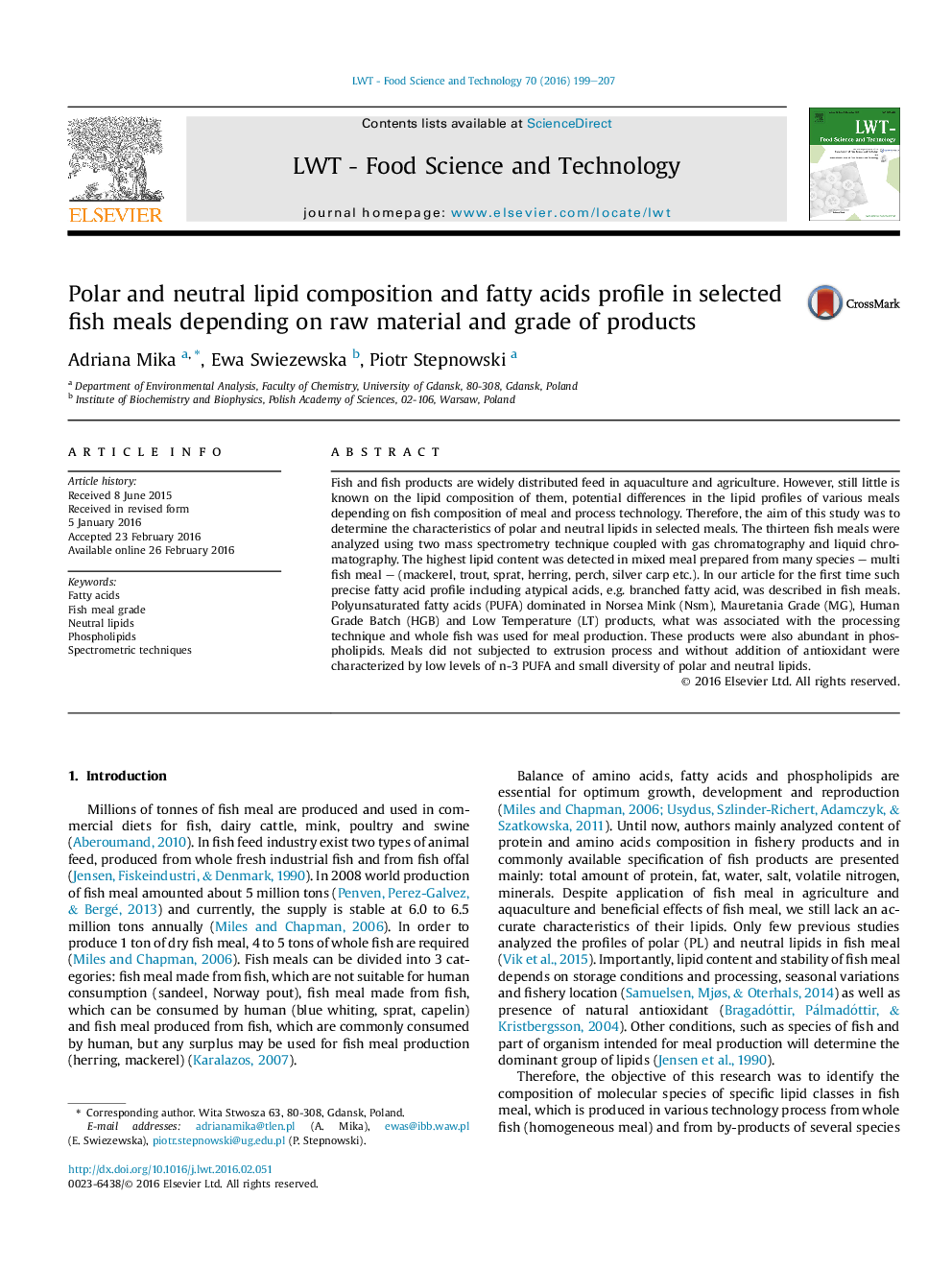| Article ID | Journal | Published Year | Pages | File Type |
|---|---|---|---|---|
| 4563586 | LWT - Food Science and Technology | 2016 | 9 Pages |
•High content of essential polyunsaturated fatty acids were recorded in homogenous meals.•Significant differences were detected in odd and branched-chain fatty acids content.•High content of phospholipids in homogenous meals were detected.•Production technique determines the quality of the food products.•Selected fish meals are a valuable functional ingredient of food or nutraceutical.
Fish and fish products are widely distributed feed in aquaculture and agriculture. However, still little is known on the lipid composition of them, potential differences in the lipid profiles of various meals depending on fish composition of meal and process technology. Therefore, the aim of this study was to determine the characteristics of polar and neutral lipids in selected meals. The thirteen fish meals were analyzed using two mass spectrometry technique coupled with gas chromatography and liquid chromatography. The highest lipid content was detected in mixed meal prepared from many species – multi fish meal – (mackerel, trout, sprat, herring, perch, silver carp etc.). In our article for the first time such precise fatty acid profile including atypical acids, e.g. branched fatty acid, was described in fish meals. Polyunsaturated fatty acids (PUFA) dominated in Norsea Mink (Nsm), Mauretania Grade (MG), Human Grade Batch (HGB) and Low Temperature (LT) products, what was associated with the processing technique and whole fish was used for meal production. These products were also abundant in phospholipids. Meals did not subjected to extrusion process and without addition of antioxidant were characterized by low levels of n-3 PUFA and small diversity of polar and neutral lipids.
